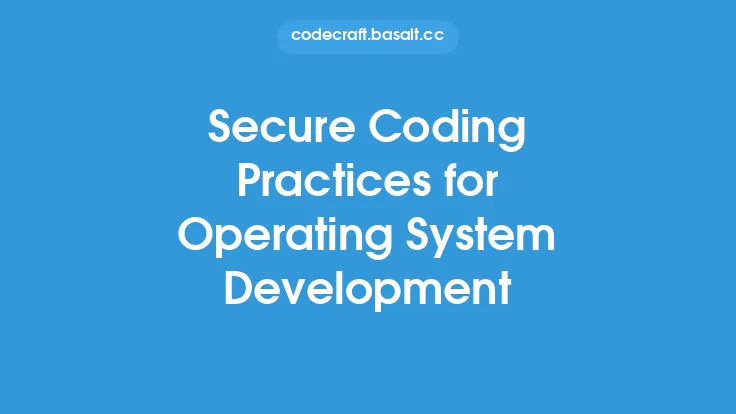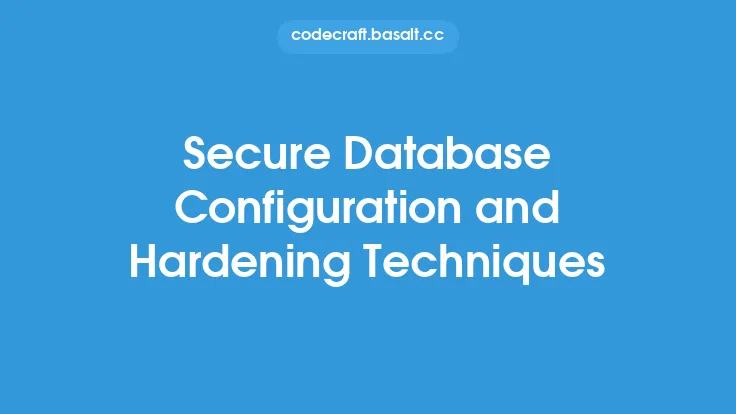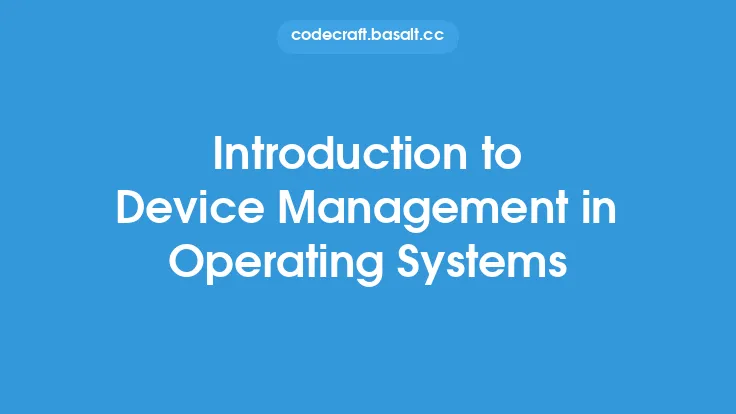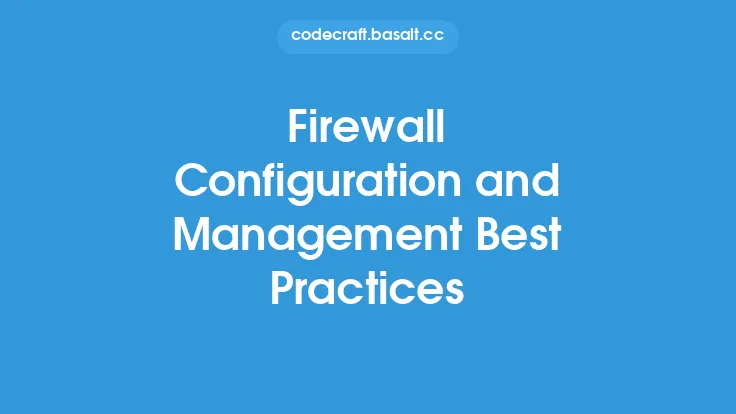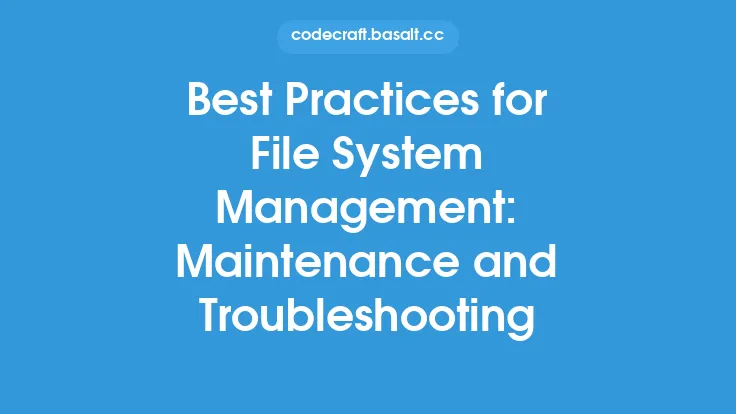Secure configuration and change management are crucial aspects of maintaining the security and integrity of operating systems. A secure configuration ensures that the operating system is set up to minimize vulnerabilities and prevent unauthorized access, while change management involves tracking and controlling changes to the system to prevent unintended consequences. In this article, we will delve into the importance of secure configuration and change management for operating systems, and provide guidance on how to implement these practices effectively.
Introduction to Secure Configuration
Secure configuration is the process of setting up an operating system to minimize vulnerabilities and prevent unauthorized access. This involves configuring the system's settings, such as user accounts, permissions, and network settings, to ensure that they are secure and compliant with organizational policies. A secure configuration is essential to prevent attacks and data breaches, and to ensure the integrity of the system. Some key aspects of secure configuration include:
- Disabling unnecessary services and features to reduce the attack surface
- Configuring user accounts and permissions to ensure that users have only the necessary access to perform their jobs
- Setting up network settings, such as firewall rules and intrusion detection systems, to prevent unauthorized access
- Configuring logging and auditing to detect and respond to security incidents
- Implementing encryption to protect sensitive data
Change Management for Operating Systems
Change management is the process of tracking and controlling changes to an operating system to prevent unintended consequences. This involves documenting and approving changes, testing and validating changes, and implementing changes in a controlled manner. Change management is essential to prevent errors, downtime, and security breaches, and to ensure that changes are made in a way that is consistent with organizational policies. Some key aspects of change management include:
- Documenting and approving changes to ensure that they are necessary and authorized
- Testing and validating changes to ensure that they do not introduce errors or security vulnerabilities
- Implementing changes in a controlled manner, such as using staging environments and rollback plans
- Monitoring and reviewing changes to ensure that they are working as intended and do not introduce unintended consequences
- Maintaining a change management database to track and record changes
Implementing Secure Configuration and Change Management
Implementing secure configuration and change management requires a combination of technical and procedural controls. Some key steps include:
- Developing a secure configuration baseline that outlines the secure configuration settings for the operating system
- Implementing configuration management tools, such as Puppet or Ansible, to automate and enforce secure configuration settings
- Establishing a change management process that includes documentation, approval, testing, and implementation of changes
- Training personnel on secure configuration and change management best practices
- Continuously monitoring and reviewing the system to ensure that it remains secure and compliant with organizational policies
Tools and Technologies for Secure Configuration and Change Management
There are a variety of tools and technologies available to support secure configuration and change management. Some examples include:
- Configuration management tools, such as Puppet or Ansible, that automate and enforce secure configuration settings
- Change management tools, such as ServiceNow or BMC Remedy, that provide a framework for documenting, approving, and implementing changes
- Vulnerability scanning tools, such as Nessus or OpenVAS, that identify vulnerabilities and provide recommendations for remediation
- Compliance scanning tools, such as Tripwire or Qualys, that identify configuration settings that are not compliant with organizational policies
- Version control systems, such as Git or Subversion, that track and manage changes to configuration files and scripts
Best Practices for Secure Configuration and Change Management
Some best practices for secure configuration and change management include:
- Implementing a defense-in-depth approach that includes multiple layers of security controls
- Continuously monitoring and reviewing the system to ensure that it remains secure and compliant with organizational policies
- Training personnel on secure configuration and change management best practices
- Documenting and approving changes to ensure that they are necessary and authorized
- Testing and validating changes to ensure that they do not introduce errors or security vulnerabilities
- Implementing a change management process that includes documentation, approval, testing, and implementation of changes
Common Challenges and Mistakes
Some common challenges and mistakes in secure configuration and change management include:
- Inadequate documentation and approval of changes, which can lead to unauthorized or untested changes
- Insufficient testing and validation of changes, which can lead to errors or security vulnerabilities
- Inadequate training of personnel on secure configuration and change management best practices
- Failure to continuously monitor and review the system to ensure that it remains secure and compliant with organizational policies
- Inadequate implementation of configuration management tools and change management processes, which can lead to inconsistent or insecure configuration settings.
Conclusion
Secure configuration and change management are critical aspects of maintaining the security and integrity of operating systems. By implementing secure configuration settings, tracking and controlling changes, and using tools and technologies to support these processes, organizations can reduce the risk of security breaches and ensure the integrity of their systems. By following best practices and avoiding common challenges and mistakes, organizations can ensure that their operating systems are secure, compliant, and well-maintained.

